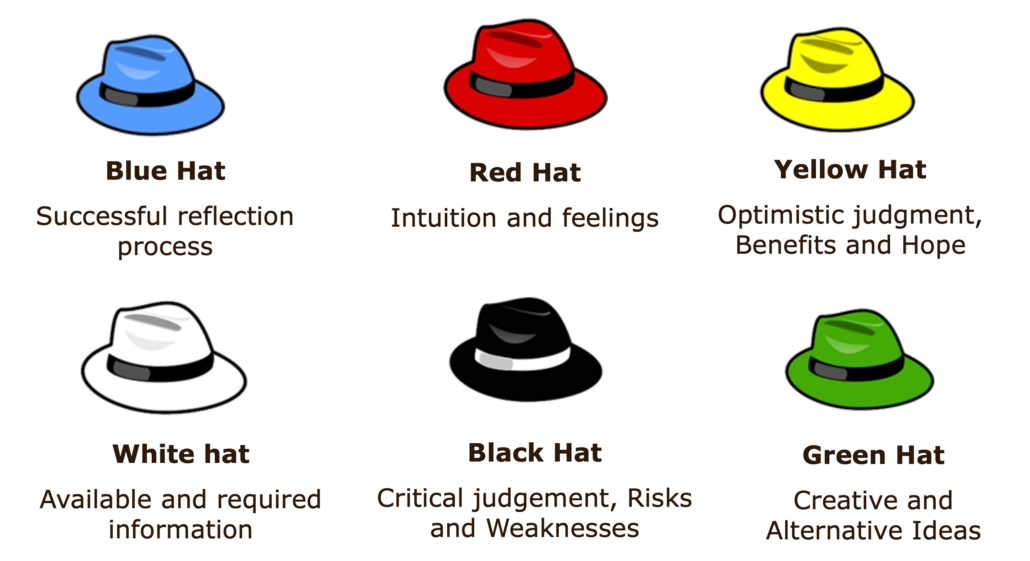
The “Six Thinking Hats” technique, developed by psychologist Edward de Bono, is an innovative tool that enhances thinking, problem-solving, and decision-making processes. For coaches, it offers a structured way to guide individuals or teams through complex challenges by encouraging diverse perspectives. This method helps clients explore new ideas, gain clarity, and develop well-rounded solutions.
The Six Hats represent different thinking styles, each symbolised by a colour that helps participants adopt a specific mindset:
To apply the Six Thinking Hats technique effectively, guide your clients through each hat to explore all dimensions of the issue at hand. For example:
In a problem-solving or creative thinking session, this method allows individuals to:
One of the most powerful aspects of this tool is its ability to challenge clients to adopt unfamiliar thinking styles. For example, a cautious, risk-averse client may benefit from wearing the yellow hat to focus on the positive possibilities. Or a highly optimistic client could gain insight from wearing the black hat to consider potential challenges and limitations.
By encouraging clients to step outside their comfort zones, you can help them develop more flexible, adaptive thinking patterns that lead to better decisions.
Discover our KIT- Thinking Hats and make your clients think outside the box